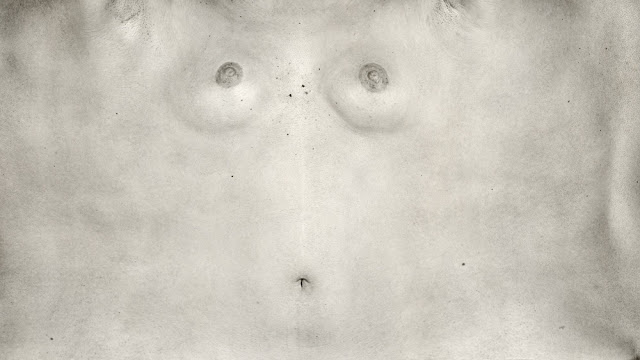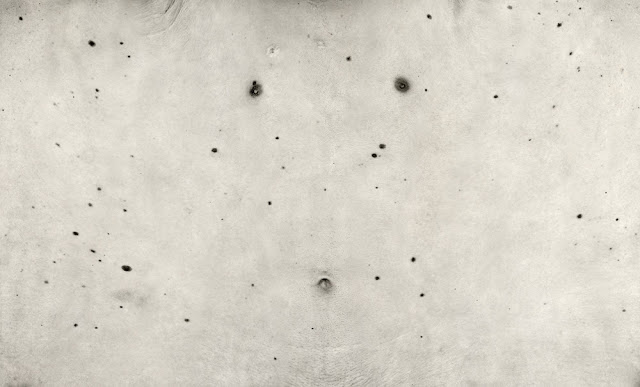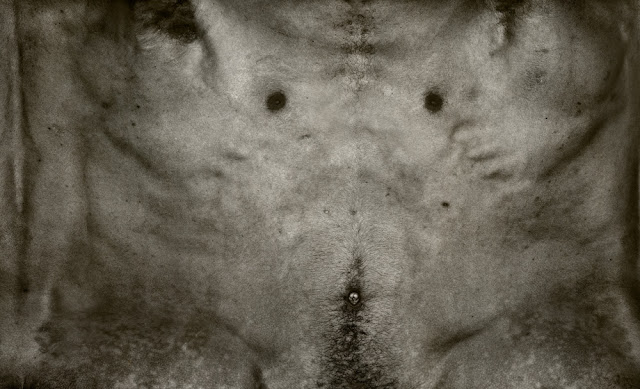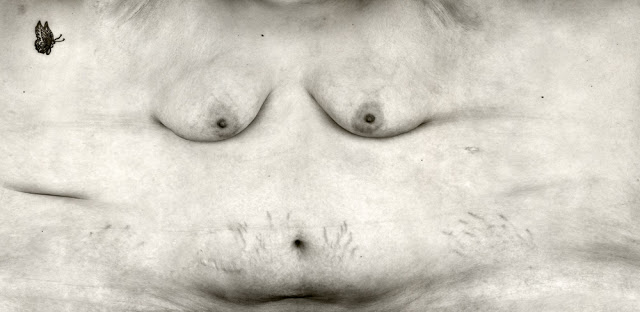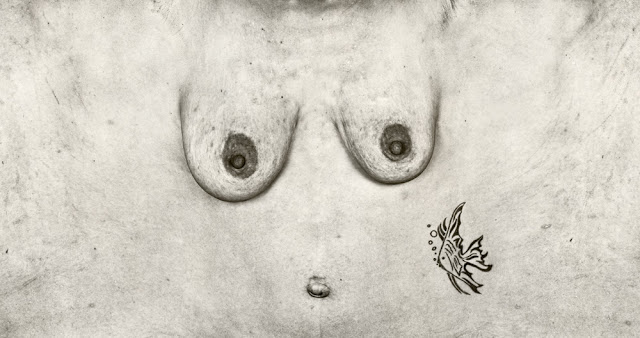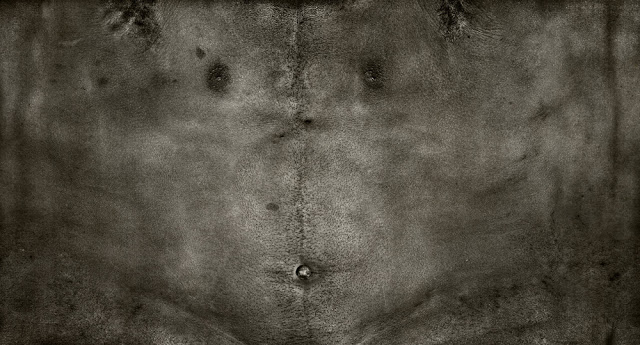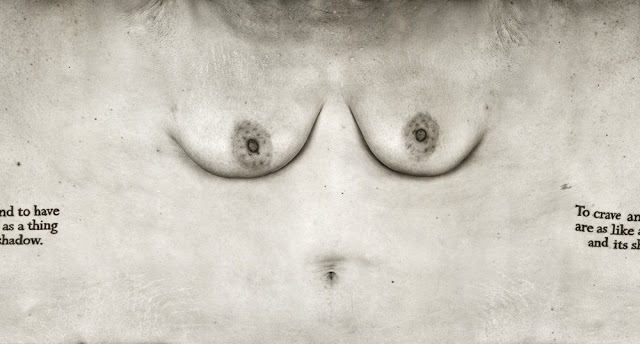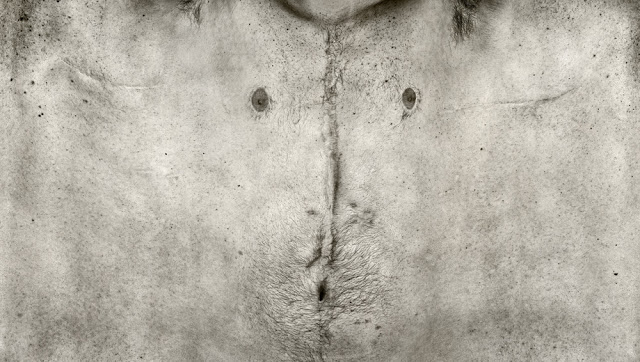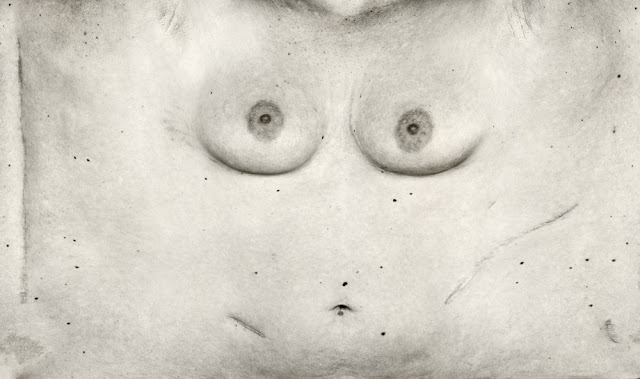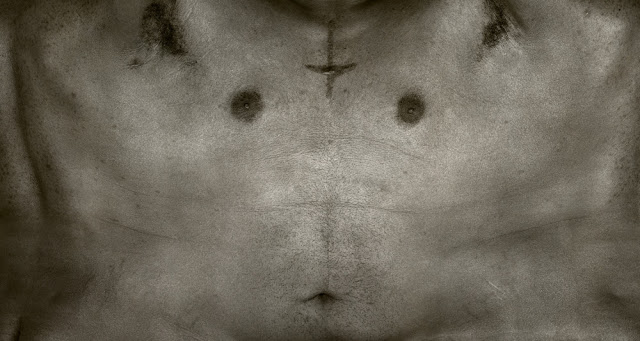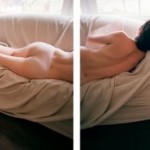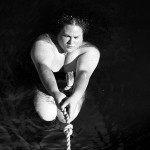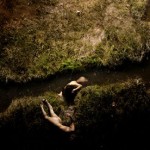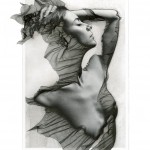Critical Mass: June Yong Lee
When I first saw the movie, Silence of the Lambs, I had a visceral response to the idea of using skin to create clothing. I have always been a sewer and the idea of patterns, darts, and seaming was something I was all too familiar with, so it made the movie was even more disturbing. The work of June Yong Lee brought that movie to mind, but with a completely different intention. I discovered his work while juroring Critical Mass this fall and I was taken back to a place of looking at skin, without skeletal structure is a totally unique way. He looks at skin as a way to “preserve memory” exploring the push and pull of time, of markings and moles, and of aging. The landscapes or “human”scapes that June creates are like charcoal rubbings that reveal history and life lived.
June Yong Lee received a B.F.A. from the Academy of Art University in San Francisco and his M.F.A. from Indiana University in Indiana, and he is currently an Assistant Professor in the department of Art and Design at Arcadia University in Glenside, PA. His work has been exhibited internationally at Arts at California Institute of Integral Studies in San Francisco, the Griffin Museum of Photography in Massachusetts, TOC gallery in Japan, and the Pingyao International Photo Festival in China. June’s work is part of the art collection at the Kinsey Institute for Research in Sex, Gender, and Reproduction and Kiyosato Museum of Photographic Arts in Japan.
Bodies record personal stories that often differ from how we remember them. Memories are, like scars on skin, fragile; skin reflects who we are and tells stories that we might not always recognize. Some scars last longer than others while some heal but never disappear, helping us preserve memory. We use tattoos to engrave memories under our skin and make them permanent. We change the form of our bodies by losing and gaining weight. Although memories deteriorate with time, our skin never forgets.
Through the photographs in the Torso series, I want to visually present what skin can reveal to us. By removing the forms and shapes of the body, viewers are asked to consider both the unique and universal characteristics of skin. Digital technology enabled me to create this constructed imagery while still maintaining the reality of the body. This interplay between fiction and non-fiction provides us with objective, detached, and unfamiliar views of the body and its stories. Observing the intimate and subtle details of each individual’s history can help us to identify our own personal differences and understand others—and ourselves—better.
Posts on Lenscratch may not be reproduced without the permission of the Lenscratch staff and the photographer.
Recommended
-
Tara Sellios: Ask Now the BeastsApril 6th, 2024
-
ALEXIS MARTINO: The Collapsing Panorama April 4th, 2024
-
Emilio Rojas: On Gloria Anzaldúa’s Borderlands: The New MestizaMarch 30th, 2024
-
Artists of Türkiye: Eren SulamaciMarch 27th, 2024
-
Love and Loss in the Cosmos: Valeria Sestua In Conversation with Vicente IsaíasMarch 19th, 2024

